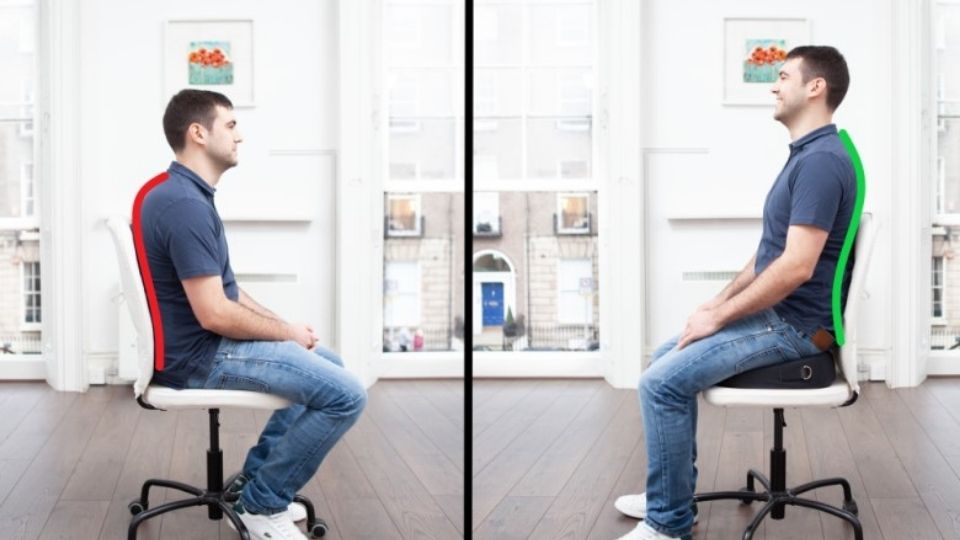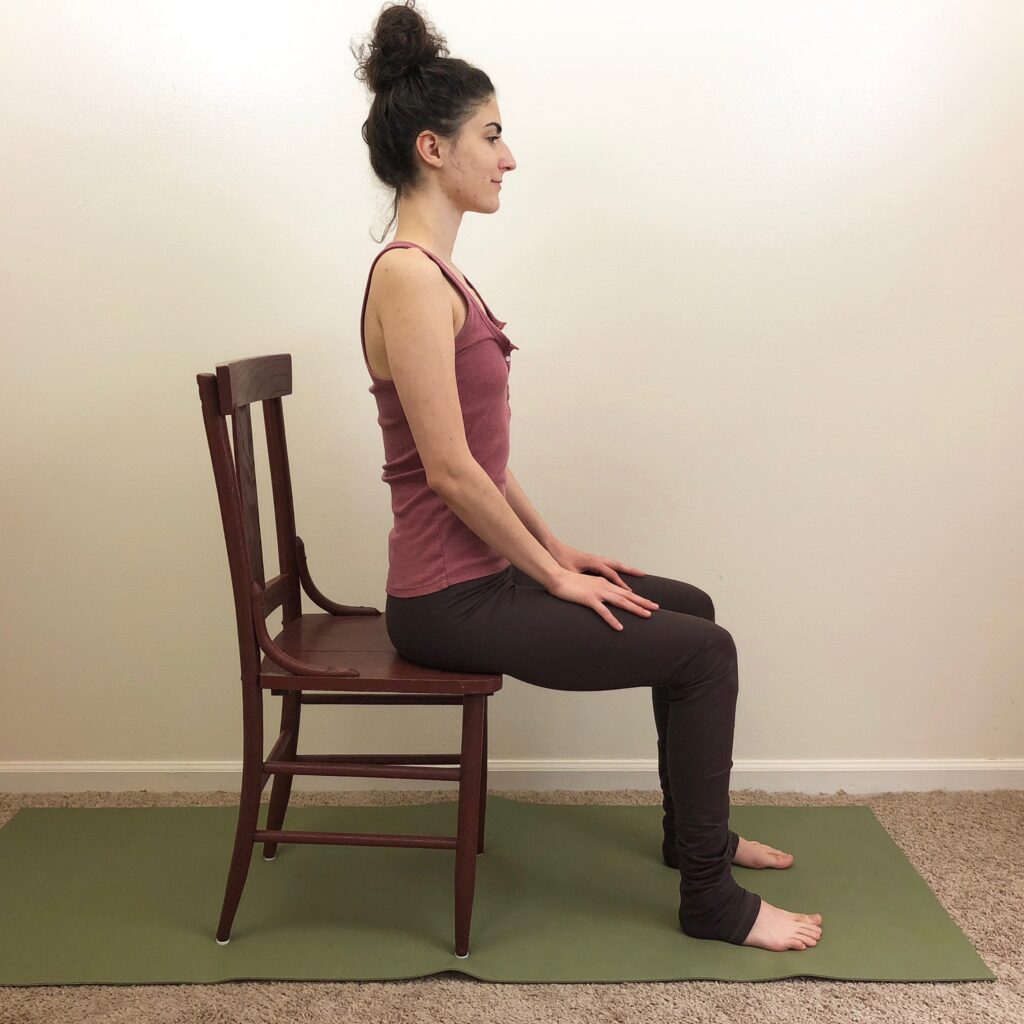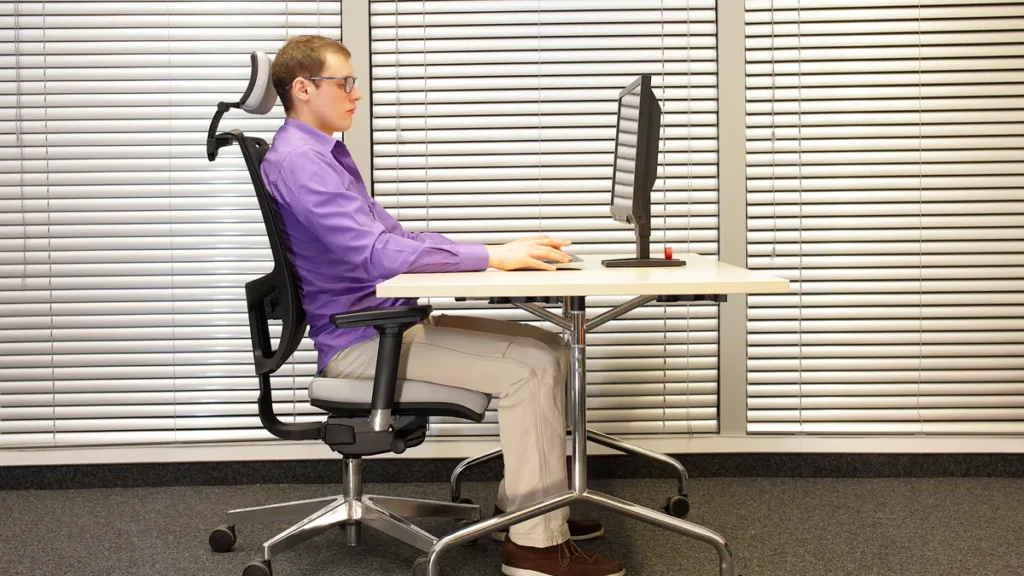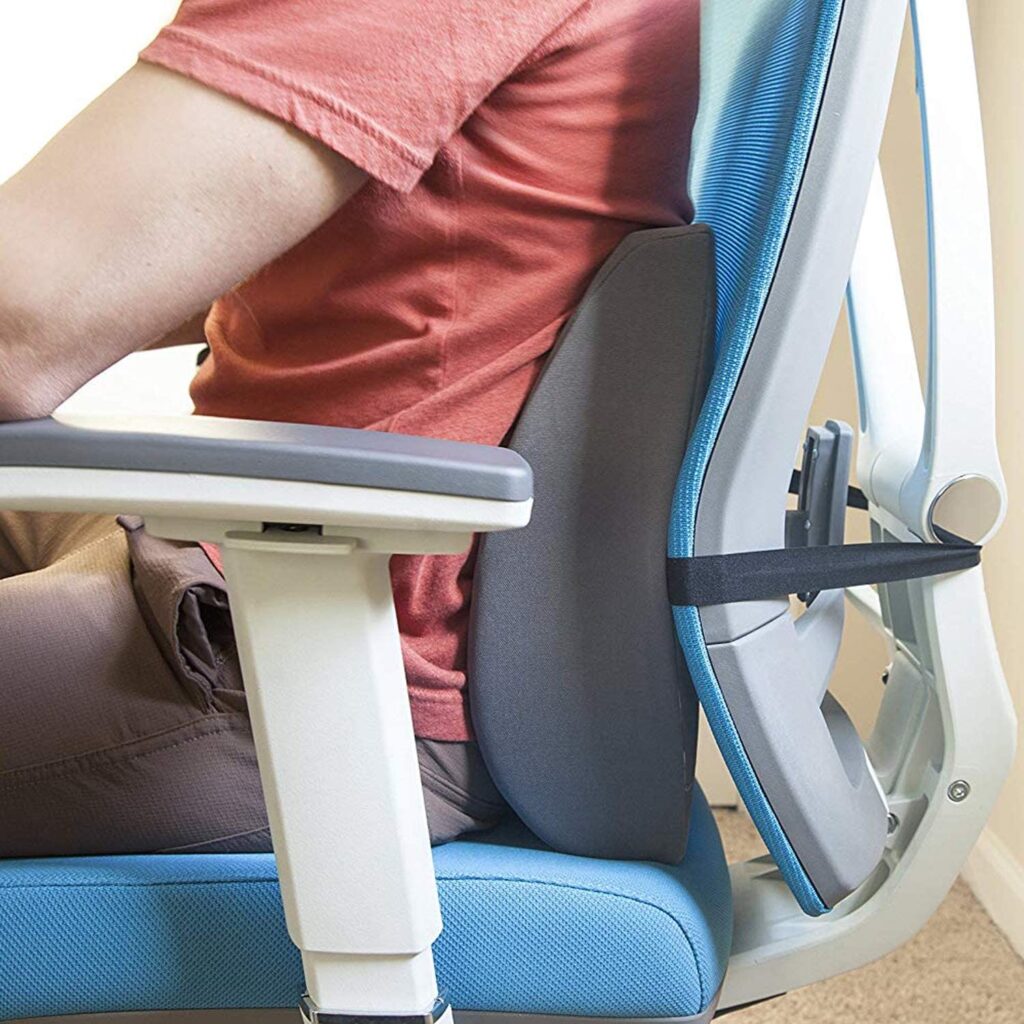
8 Tips to Improve Your Posture
If you’re experiencing pain, discomfort, or body imbalances, your sitting habits might be a major contributor. Consider this: the majority of people spend anywhere from nine to 14 hours a day sitting.

Sitting for long periods can lead to tight hips, neck and shoulder tension, and, of course, back pain! This discomfort can also affect your focus and productivity at work. It might seem like the obvious solution is to sit less, but for many of us, that’s not an option. We have to work in a seated position most days.
To help alleviate these issues and boost your productivity, consider these tips to take better care of your body.
Make sure you're in a good position before you sit down
Just like when you’re squatting at the gym, it’s much easier to maintain good form if you start correctly rather than trying to correct it later. Before you sit down, stand with proper posture. As you lower yourself into the seat, hinge at your hips (move your hips backward as if you’re aiming to touch the wall behind you with your butt) while keeping your back straight. You can apply gym techniques to everyday situations like this.

Try sitting on the front edge of your chair
When you sit all the way back in your chair, it puts a lot of pressure on your hamstrings, which we want to avoid. Sitting on your “sit bones” not only helps prevent stiffness in your hamstrings but also ensures that your femur doesn’t end up in an uncomfortable position within your hip socket. So, scoot forward in your seat to alleviate discomfort.

Sit on a hard surface
While sitting on something soft like a couch cushion may feel cozy, it’s not as stable or sturdy. This lack of stability can make it harder to maintain proper posture.
What often occurs is that the tailbone tucks under, causing a curved lower back, which, in turn, leads to more rounding of your upper back. On the other hand, a hard surface provides the stability needed to maintain good posture.

Choosing a higher seat can help improve your posture
Sitting in a higher position is closer to standing, which means there’s less hip flexion. This reduced hip flexion results in less tightness in your hips and quadriceps, and ultimately, it helps prevent that “Donald Duck butt” appearance when standing. It’s all connected!

If you choose to sit back in your chair, consider using a lumbar support
In situations where you have no choice but to sit all the way back, like in a car or on an airplane where you’re belted in, using lumbar support is crucial. Most chairs promote a rounded lower back, which is not ideal for posture. To correct this, roll up a towel and place it between the chair and your lower back.
Ensure the cushioning is thick enough to provide a slight natural lumbar curve. Alternatively, there are specialized products designed for lumbar support that you can easily find through a Google search, such as “lumbar support.”
You can also explore the Back Fit Pro website for a range of posture-supporting products, some of which may be on the higher end in terms of price but offer excellent support.

Recline back
Reclining your seat follows a similar principle to sitting in a higher position. When you can’t sit at the edge of your seat, reclining may be an option. In this position, there’s a greater angle between your thighs and pelvis, and it requires less effort to maintain good posture in your back.
However, be cautious not to recline too far back to the point where you have to strain your head and neck forward to do something.

Remember to change your sitting position frequently
It’s essential to avoid staying in one position for too long, whether you’re sitting or standing, to prevent developing a sore back. Aim to change your sitting position every 5, 10, or 20 minutes. Take a look at the pictures below for some ideas on how to switch it up while remaining seated.
Keep in mind that some of these positions may only be suitable for certain types of chairs, so choose the ones that work best for you. While some may appear a bit unusual, they’re all viable options to keep your back comfortable.

Don't forget to stand up and move around regularly
Even if you’re following all the right sitting techniques, it’s still crucial to keep your body in motion. This doesn’t mean you need to carry a dumbbell around and do curls all day, but if you have a desk job, make it a habit to take a short two to five-minute break every 30 to 60 minutes. Use this time to stand up, stretch, or walk around.
If your job requires you to be on your feet constantly, try to find a place to sit or lie down during breaks. You can also explore some mobility exercises to do during these breaks (there are plenty of examples on the Healthy Movement Blueprint social media pages). Ultimately, the key is to keep your body moving, no matter how you choose to do it.

Before you get overwhelmed thinking about how you can’t possibly do all of these tips, take a step back. Do what you can, where you can. Maybe you can implement the first two at your office job but not at your kitchen table.
Or perhaps you can do the next two in the kitchen but not at work. The key is to make the most of whichever ones you can apply in your daily life.
Whether you’re currently experiencing pain or not, there’s no better time to start making these changes. If you’re in pain, these adjustments can help alleviate it.
If you’re not in pain but have poor posture habits, it’s still an excellent opportunity to make positive changes for your health
Never miss any important news. Subscribe to our newsletter.
Related News


British Investor Who Predicted US Slump Warns of Next Crash

I’m a Death Doula: 4 Reasons I Believe Death Isn’t the End


Tech to Reverse Climate Change & Revive Extinct Species

AI Unlocks the Brain’s Intelligence Pathways

XPENG Unveils Iron Robot with 60 Human-like Joints

Can AI Outsmart Humanity?

11 ChatGPT Prompts to Boost Your Personal Brand

Keir Starmer Hints at Possible Tax Hikes on Asset Income

Navigating the Future of AI: Insights from Eric Schmidt
